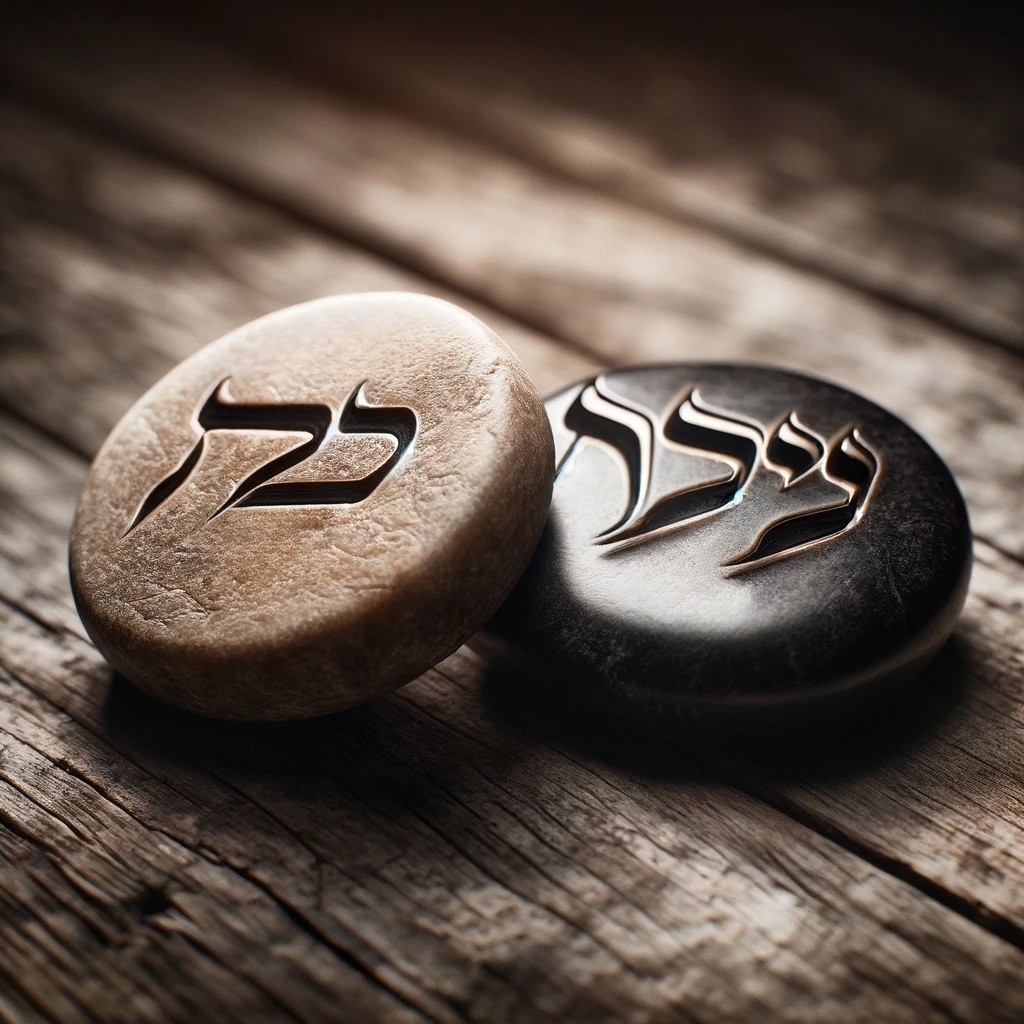
The Urim and the Thummim
Introduction
The Urim and Thummim are ancient objects mentioned in the Bible, closely associated with the High Priest of Israel and used for divination. These items have long intrigued scholars and theologians due to the sparse details provided in the biblical texts, leading to various interpretations and theories about their nature and use.
Biblical References
The primary references to the Urim and Thummim are found in the Torah, particularly within the books of Exodus, Leviticus, and Numbers. They are also mentioned in Deuteronomy, Samuel, and Ezra. These references provide glimpses into their significance and function:
1. Exodus 28:30
And thou shalt put in the breastplate of judgment the Urim and the Thummim; and they shall be upon Aaron's heart, when he goeth in before the LORD: and Aaron shall bear the judgment of the children of Israel upon his heart before the LORD continually.
This verse, within the context of describing the priestly garments, mentions that the Urim and Thummim should be placed in the breastplate of judgment worn by the High Priest, so they may be before the Lord. The High Priest would bear the judgment of the Israelites over his heart before the Lord continually.
2. Leviticus 8:8
And he put the breastplate upon him: also he put in the breastplate the Urim and the Thummim.
This passage describes the consecration of Aaron as High Priest and mentions that he wore the breastplate of judgment with the Urim and Thummim.
3. Numbers 27:21
And he shall stand before Eleazar the priest, who shall ask counsel for him after the judgment of Urim before the LORD: at his word shall they go out, and at his word they shall come in, both he, and all the children of Israel with him, even all the congregation.
Here, Joshua, Moses' successor, is instructed to stand before Eleazar the priest, who would inquire for him by the judgment of the Urim before the Lord, highlighting their use in seeking divine guidance.
4. 1 Samuel 28:6
And when Saul enquired of the LORD, the LORD answered him not, neither by dreams, nor by Urim, nor by prophets.
This passage recounts how King Saul, seeking guidance from the Lord, did not receive an answer through dreams, prophets, or the Urim, illustrating their role in divine communication.
5. Ezra 2:63 and Nehemiah 7:65
And the Tirshatha said unto them, that they should not eat of the most holy things, till there stood up a priest with Urim and with Thummim.
And the Tirshatha said unto them, that they should not eat of the most holy things, till there stood up a priest with Urim and Thummim.
These verses mention that a priest would use the Urim and Thummim to determine the eligibility of certain individuals claiming priesthood until a priest with Urim and Thummim could make a decision.
Theories and Interpretations
The enigmatic nature of the Urim and Thummim has led to various theories and interpretations regarding their nature, appearance, and use:
1. Nature and Appearance - The exact nature, appearance, and material of the Urim and Thummim are not described in the Bible. Some traditions suggest they were stones or objects with names or symbols engraved on them, possibly kept in the High Priest's breastplate.
2. Method of Use - Theories about how the Urim and Thummim were used for divination vary widely. Some suggest they were cast like lots to obtain a yes or no answer, while others propose that they illuminated or changed appearance to indicate an answer.
3. Meaning of the Names - The Hebrew words "Urim" and "Thummim" have been interpreted to mean "lights" and "perfections," respectively, or "curses" and "truths," suggesting their role in revealing divine will or judgment. The exact translation and implication of these names remain subjects of scholarly debate.
4. Symbolic Significance - The Urim and Thummim symbolize God's guidance and the revelation of His will to His people, particularly in matters of national or religious importance. They underscore the role of the High Priest as a mediator between God and the Israelites.
Historical and Scholarly Perspectives
Throughout history, the Urim and Thummim have fascinated scholars, theologians, and believers, leading to various interpretations and speculative reconstructions. Their mysterious nature has also influenced cultural and religious references beyond the biblical texts.
1. Scholarly Debate - Scholars have debated the origin, use, and significance of the Urim and Thummim. Some view them as ancient relics of a bygone era of divination, while others see them as symbolic representations of divine communication.
2. Cultural Impact - The Urim and Thummim have found their way into various cultural narratives and have been referenced in literature and art, reflecting their enduring mystique and significance.
Conclusion
While the Urim and Thummim hold a significant place in biblical tradition as instruments of divine guidance, the specifics of their nature, use, and interpretation remain enveloped in mystery. This enduring enigma invites ongoing exploration and contemplation within the fields of biblical studies and theology. The Urim and Thummim serve as a testament to the ancient practices of seeking divine will and highlight the intricate relationship between the Israelites and their God.